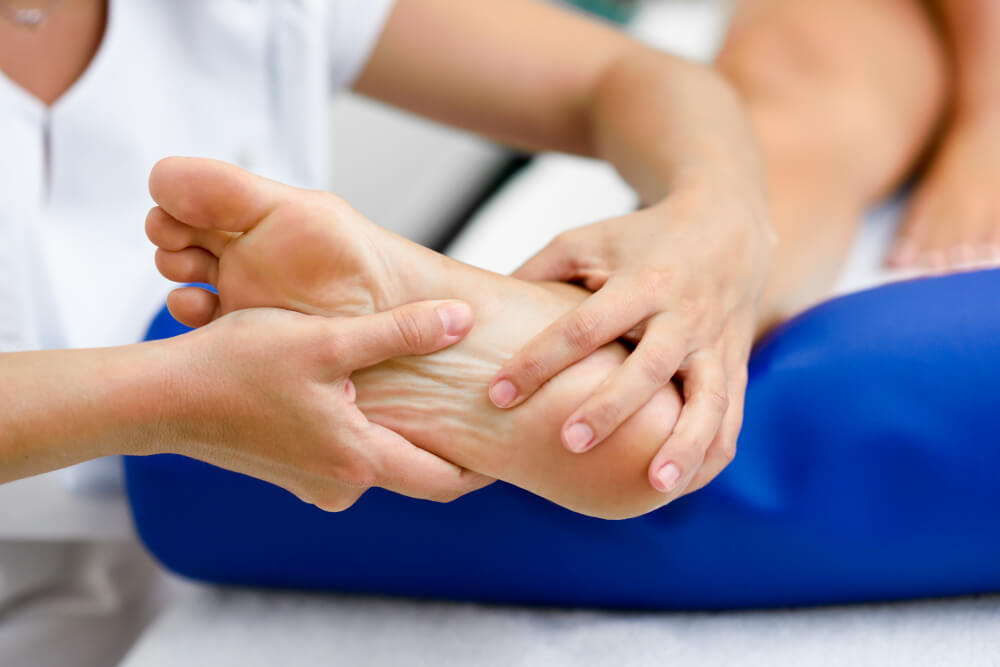Conquering Turf Toe: Effective Orthopedic Care for Foot and Ankle Health
Our feet and ankles are the foundation of our mobility, taking on significant stress throughout the day. When pain strikes in these crucial joints, it can disrupt even the most basic activities. Turf toe, a sprain of the ligaments connecting the big toe to the foot, is a common injury seen in athletes and individuals participating in activities that involve quick starts, stops, and changes in direction. This article equips you with comprehensive information about turf toe, focusing on the expertise of orthopedic foot and ankle specialists and the treatment options available to manage this condition effectively.
Understanding Turf Toe: Causes, Symptoms, and Diagnosis
What is Turf Toe?
Turf toe is a sprain of the plantar plate, a ligament located on the underside of the big toe joint. This ligament connects the big toe bone (metatarsal) to the sesamoid bones, small bones embedded in the tendon beneath the big toe. Turf toe occurs when the ligament is overstretched or torn due to excessive forceful bending of the big toe joint.
Causes of Turf Toe:
Turf toe is most commonly seen in athletes participating in sports like:
- Football: Sudden changes in direction and forceful pushing off from the ground can cause turf toe.
- Basketball: Quick pivoting and jumping movements can put stress on the big toe joint.
- Soccer: Kicking the ball with improper technique can lead to turf toe.
Symptoms of Turf Toe:
- Pain: The most common symptom is pain at the base of the big toe, often described as sharp or throbbing. Pain may worsen with activity and improve with rest.
- Swelling: The area around the big toe joint may become swollen and tender to the touch.
- Bruising: In some cases, bruising may be visible around the injured area.
- Stiffness: Difficulty bending or flexing the big toe joint due to pain and inflammation.
- Difficulties walking: Significant pain may make walking or putting weight on the affected foot difficult.
The Path to Recovery: Orthopedic Foot and Ankle Specialists for Turf Toe
When to See an Orthopedic Foot and Ankle Specialist:

Consulting an orthopedic foot and ankle specialist is crucial if you experience persistent pain, swelling, or difficulty walking after a toe injury. Early diagnosis and treatment can promote faster healing and prevent complications.
Diagnosis of Turf Toe by Orthopedic Specialists:
The doctor will conduct a thorough physical examination, assessing your big toe joint for tenderness, swelling, and range of motion. X-rays may be used to rule out fractures, while in some cases, an MRI might be necessary for a detailed evaluation of the soft tissues like ligaments.
Treatment Options for Turf Toe:
Orthopedic foot and ankle specialists offer a range of treatment options for turf toe, tailored to the severity of the injury. Here’s an overview:
- RICE Protocol: This stands for Rest, Ice, Compression, and Elevation. Resting the injured toe, applying ice packs to reduce inflammation, using compression bandages for support, and elevating the foot can significantly promote healing in the initial stages.
- Immobilization: In some cases, wearing a walking boot or splint for a short period may be necessary to immobilize the joint and promote healing.
- Pain Management: Over-the-counter pain relievers like ibuprofen or acetaminophen can help manage pain and inflammation.
- Physical Therapy: A physical therapist can design a personalized rehabilitation program to improve flexibility, strengthen surrounding muscles, and restore full range of motion in the big toe joint.

